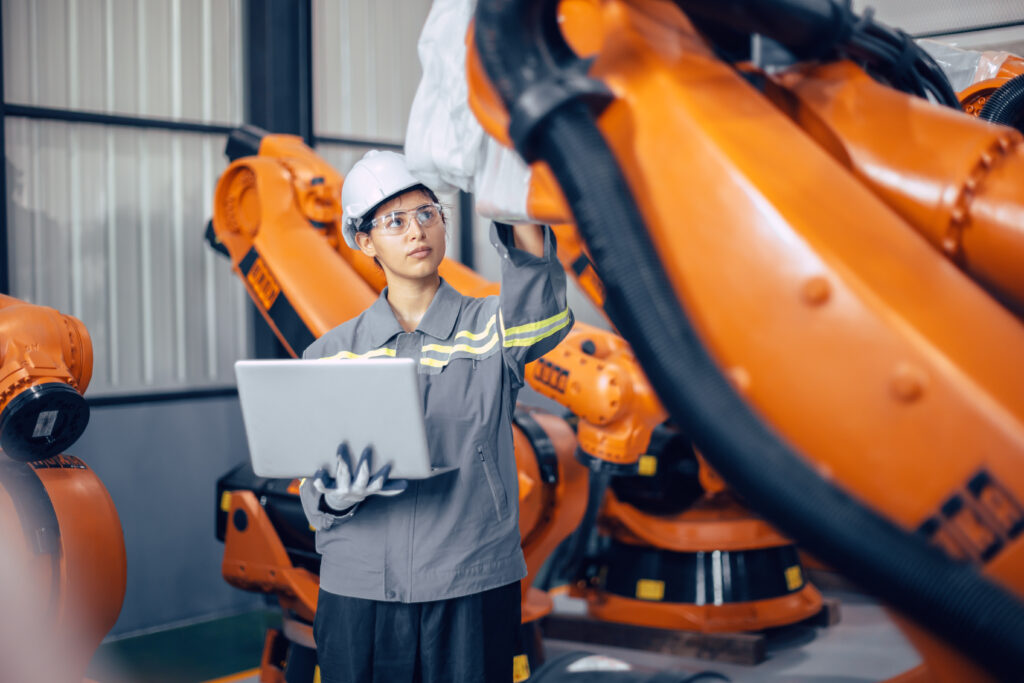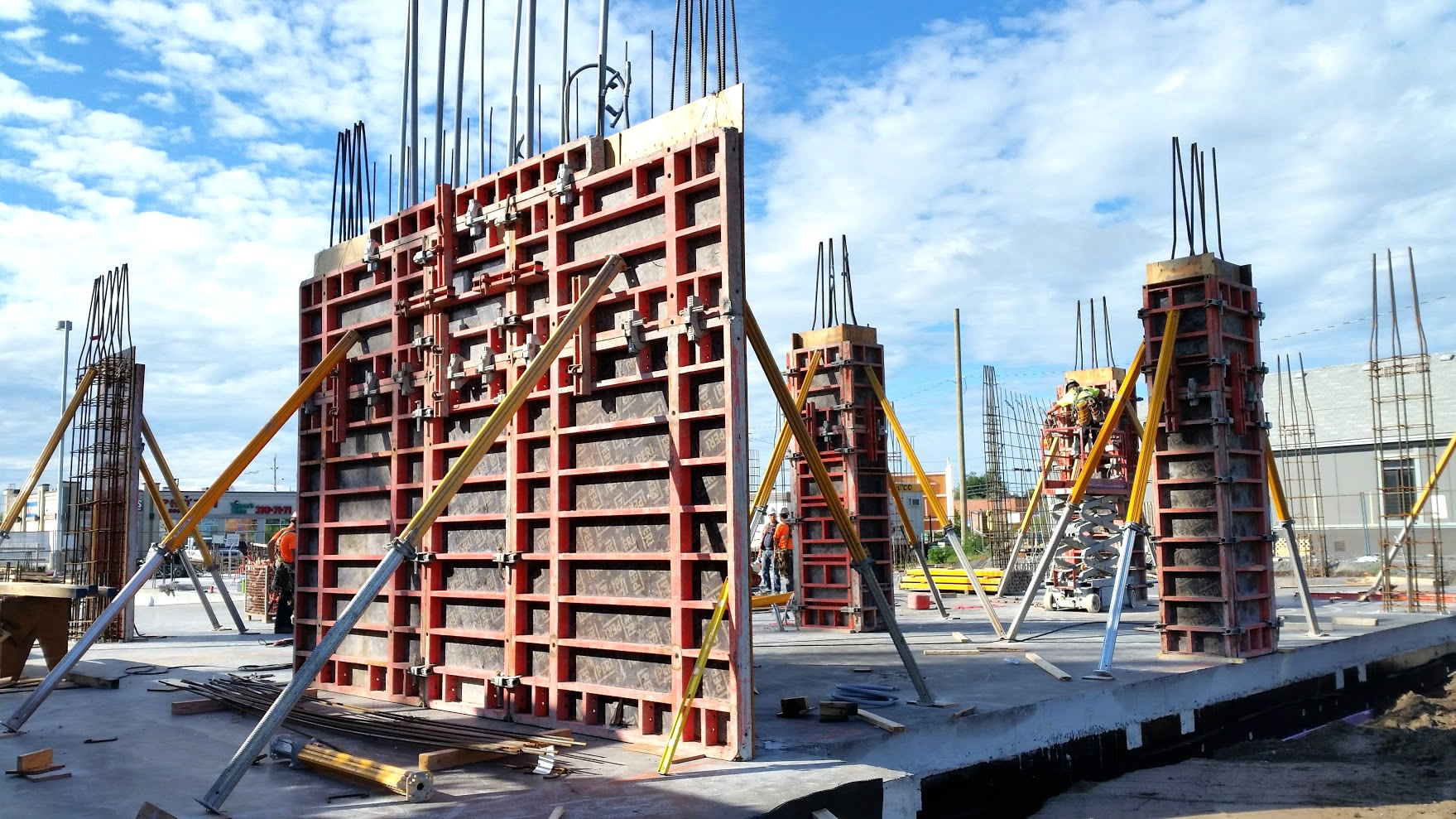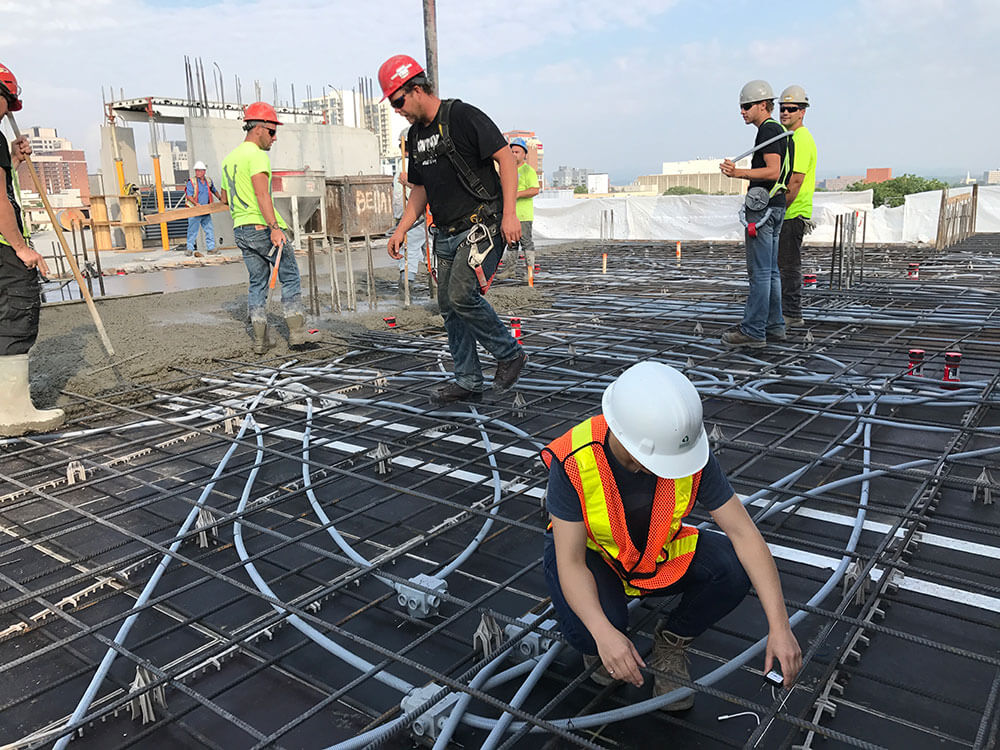As construction becomes more digital, with cloud platforms, BIM, and IoT-connected equipment, it also becomes a prime target for cyberattacks. Ransomware, data breaches, and phishing scams are surging across the industry. A major ransomware attack on Canadian construction firm Bird Construction in December 2019 led to the theft and encryption of sensitive company data, and another attack that disrupted over 1,000 workers in Chicago show the stakes are high. A recent study by Dodge Construction Network (DCN), in partnership with Egnyte, highlights the growing cybersecurity risks in construction. It found that over half of contractors have faced cyber threats in the past two years, yet only 39% of architects, engineers, and contractors report consistent access to critical project data. Cybersecurity in construction is no longer optional, it’s essential. This blog explores the top threats facing construction firms and offers actionable strategies to build resilient defenses, both on-site and across your project ecosystem.
SmartRock® Long Range Savings for Big Projects
The Growing Threat of Ransomware in Construction
No cyber threat looms larger in construction than ransomware. These attacks encrypt company data and demand payment, effectively holding entire projects hostage. Just one successful attack can shut down job sites, delay timelines, and result in massive costs from recovery, lost productivity, and contract penalties.
Why Construction Is a Prime Target
Construction firms rely heavily on uninterrupted access to project plans, schedules, and critical documentation, and when ransomware attacks lock these systems, operations can come to an immediate halt. Cybercriminals are well aware that construction projects operate under tight deadlines, making firms more likely to comply with ransom demands to resume work quickly. Adding to the sector’s appeal, the industry routinely handles high-value transactions, which further increases its attractiveness as a target for attackers seeking substantial financial gain.
Scope of the Problem
- In 2024, 481 construction organizations were listed on ransomware data-leak portals, a 41% year-over-year increase.
- Between August 2023 and July 2024, leak listings in the construction sector rose 34%.
Real-world examples
- In 2020, Chicago-based Skender was hit by ransomware, halting projects and disrupting operations.
- Saint-Gobain lost $384 million after the NotPetya attack forced a company-wide shutdown.
Risk Reduction Strategies
To protect against ransomware, construction executives must deploy a multi-layered defense strategy. The table below outlines how different protection methods work together to create a multi-layered defense against corrosion.
| Strategy | Why It Matters | Key Actions |
| Immutable backups & restore drills | Protects backups from being tampered or deleted | Store backups off-site or in the cloud; use immutable storage; run full restore drills |
| Patch management & endpoint protection | Blocks known attack vectors | Promptly apply software updates; deploy endpoint detection tools |
| Network segmentation | Limits lateral spread | Isolate business-critical systems (e.g. BIM, finance) from general access |
| Incident Response planning | Reduces chaos during an attack | Define roles, run tabletop exercises, pre-script communications |
| Cyber insurance & business-risk coverage | Provides financial relief | Many policies now cover “missed bid” losses and recovery reimbursement |
Ultimately, a layered approach delivers the most reliable protection. When preventive design, active monitoring, and targeted protection systems work in harmony, structures can withstand decades of exposure with minimal maintenance.
Understanding Human Risks in Phishing and BEC Scams
Although ransomware gets headlines, phishing remains the top entry point in construction breaches. Over 75% of sector breaches begin with malicious email links or attachments.
Sophisticated Impersonation Tactics
Cybercriminals now use highly convincing phishing techniques, often posing as:
- Subcontractors or suppliers
- Clients or project partners
- Internal employees such as finance or project managers
These emails frequently mimic authentic company branding, email formats, and signatures, making them difficult to spot.
Real-World Example: Turner Construction Attack (2020)
In a 2020 incident, attackers spoofed a vendor email from Turner Construction. The fraudulent message instructed staff to wire payments to a fake bank account, resulting in significant financial loss. While Turner could absorb the impact, smaller contractors could face severe financial consequences from similar attacks.
Mobile and Remote Work Vulnerabilities
- Many construction professionals work remotely or directly on-site, relying on mobile devices for communication.
- These devices often have:
- Less secure email systems
- Limited malware detection and filtering tools
- Weaker network protections, especially when connected to public or temporary Wi-Fi.
The High-Risk Nature of Construction Workflows
- Construction teams are highly decentralized, spread across job sites and offices.
- Communication moves fast, creating opportunities for attackers to exploit trust and urgency.
Just one click on a malicious link or attachment can unleash malware across shared systems and networks.
Strengthening the Human Firewall
People are both the weakest link and strongest defense. That’s why cybersecurity awareness training must be ongoing and mandatory across all levels, from field supervisors to finance teams.
- Ongoing Cyber Awareness Training: Teach employees to identify spoofed addresses, verify payment requests, and avoid suspicious downloads.
- Phishing Simulation Campaigns: Test employees with mock emails and provide automatic refresher training to anyone who clicks.
- Multi-Factor Authentication (MFA): Blocks 99% of credential theft attempts.
- Email Filtering & Anti-Phishing Tools: Use AI-powered filters for advanced threat detection.
The best way to avoid these cyber threats is by proactively securing your data. For example, SmartRock® sensors use encrypted, token-based communications and undergo routine third-party penetration testing to ensure both digital and operational resilience.
Securing the Supply Chain & Project Ecosystem
Construction is a team effort, often involving dozens of subcontractors, vendors, consultants, and clients on every project. But every one of these collaborators can be a potential entry point for a cyberattack. This complex and fragmented supply chain makes the construction industry especially vulnerable to breaches, inconsistent security practices across partners and sites expose firms to risks beyond their direct control.
- In 2021, a widely used construction accounting platform was compromised, pushing malware to multiple contractors via a trusted software update.
- Malicious code hidden in third-party tools has given attackers remote access to multiple builders’ systems.
- Partners or clients with access for BIM coordination or procurement can unintentionally introduce risk if their credentials are compromised.
The consequences are serious: supply chain attacks can disrupt timelines, inflate costs, and compromise project budgets.
Want to see how AI can simplify your mix design process? Explore how SmartMix™ connects suppliers and contractors through a secure digital platform!
Third-Party Risk Management
Construction leaders can protect projects by extending cybersecurity expectations to all third parties. Key strategies include:
| Strategy | Action | Outcome |
| Vendor Risk Assessment | Evaluate encryption, MFA, antivirus, and overall security practices | Identify weak points before they become threats |
| Contractual Cybersecurity Clauses | Require vendors to follow specific controls, report breaches, and carry cyber insurance | Creates accountability and ensures compliance |
| Zero Trust Access | Limit vendor access to only what’s necessary; isolate accounts in segmented networks | Reduces lateral movement and exposure if a partner is compromised |
| Verification Steps | Implement “call-back” policies for sensitive requests like bank detail changes | Prevents BEC attacks |
| Continuous Monitoring | Review vendor activity, scan shared platforms, and monitor the dark web for leaked credentials | Detects potential threats early |
| Open Communication & Collaboration | Share intelligence on scams via industry groups (CCTX, CISA alerts) | Encourages partners to strengthen their cyber hygiene |
Cybersecurity is a shared responsibility. A single weak link in the project chain can compromise the entire ecosystem. Every participant must meet baseline security standards to ensure overall project resilience.
Protecting Connected Sites: IT/OT Convergence and IoT
Smart construction introduces new vulnerabilities. Sensors, drones, automated equipment, HVAC systems, curing monitors, all connected, create a broader attack surface.
Why IoT Devices Are Vulnerable
- Default credentials & unpatched firmware: Many devices are shipped with standard passwords or outdated software, making them easy targets.
- Stepping stones into IT networks: A compromised sensor, camera, or controller can be leveraged in “siegeware” attacks to disrupt critical systems or pivot into IT infrastructure.
- Physical consequences of digital attacks: Beyond data loss, compromised devices can impact real-world operations.
- For example:
- Hackers can pause internet-connected concrete mixers or prefab facility equipment.
- In one FBI-cited incident, attackers disabled building HVAC systems during a ransomware event.
Breached crane telemetry or safety systems can create immediate physical hazards. The UK’s National Cyber Security Centre warns that a single compromised sensor can expose entire networks. Worse, attackers can hijack connected equipment, so-called “siegeware” attacks, to freeze operations or demand ransom. These aren’t just digital threats, they’re physical risks. If a crane’s telemetry is breached or a safety system is shut down, real-world hazards emerge. As IT and OT systems converge, the cyber risk landscape expands dramatically.
Mitigating OT/IoT Risks
Securing IoT and OT systems requires a hybrid approach combining network architecture, monitoring, device hardening, and vendor selection:
Network Segmentation
- Place OT/IoT systems in dedicated VLANs with restricted communication to IT networks.
- Limit lateral movement so a compromised sensor doesn’t expose project files or financial systems.
Industrial-Grade Intrusion Detection
- Monitor operational traffic for unusual activity (e.g., commands sent at odd hours).
- Detect anomalies such as unauthorized crane movements or unexpected device communication.
Device Hardening
- Change default credentials and disable unused services.
- Regularly update firmware and software, even across multiple jobsites.
- Adopt vendor-recommended security configurations.
Security-by-Design Vendor Selection
- Choose equipment that integrates cybersecurity from day one.
- Prefer devices with encrypted transmissions and token-based authentication.
- Ensure vendors perform regular third-party penetration testing.
Emergency Fallback Plans
- Maintain manual control options for critical systems.
- Conduct joint IT-OT drills to prepare teams for real-world disruptions.
- Implement coordinated response strategies covering IT, OT, and IoT systems.
The best way to avoid these cyber threats is by proactively securing your data. For example, SmartRock® sensors use encrypted, token-based communications and undergo routine third-party penetration testing to ensure both digital and operational resilience.
Leveraging AI & Advanced Threat Detection
As cyber threats grow more complex, construction firms are increasingly turning to artificial intelligence (AI) and machine learning to stay ahead. At the same time, attackers are using AI to launch more sophisticated campaigns, like smarter phishing emails and automated vulnerability scans. This “AI arms race” is quickly becoming a defining feature of construction cybersecurity in 2025 and beyond.
AI is also a powerful defense tool. It can:
- Monitor network activity in real time
- Identify unusual behavior through User and Entity Behavior Analytics (UEBA)
- Suspend risky sessions proactively (e.g., detecting an employee downloading a massive file at 3 AM)
Why Is AI Particularly Useful for Construction Teams?
The impact is real. Firms using AI-based detection have reduced their average threat containment time from 5 hours to just 5 minutes. That means fewer files encrypted, less downtime, and faster recovery.AI also helps small or under-resourced IT teams by filtering out false alarms, allowing staff to focus only on serious threats. On the prevention side, AI-enhanced email filters can identify phishing messages by analyzing tone, grammar, and sender history, far beyond what static rules can do.

AI also boosts predictive cybersecurity. By analyzing global threat intelligence, these tools can flag which vulnerabilities are trending in construction, helping teams take action before attacks occur.
3 AI Risks and Considerations
While AI strengthens defenses, it also introduces new challenges:
| Risk | Description |
| Data poisoning | Hackers feed malicious data to AI models, skewing their decision-making. |
| System malfunctions | AI may mistakenly block legitimate operations; insurance may not cover the impact. |
| Over-reliance | Blind trust in AI can reduce vigilance; human oversight remains crucial. |
Despite these concerns, AI offers a powerful force multiplier, especially for firms without large cybersecurity teams. Many are now adopting managed detection and response services that bundle AI with expert oversight. At Giatec, AI-backed cloud monitoring has helped us detect and isolate suspicious login attempts in seconds, speed that wasn’t possible before.
Used wisely, AI strengthens both defenses and agility. In the evolving cyber landscape, it’s fast becoming a cornerstone of construction cybersecurity.
Interested in how digital tools are transforming construction? Read more on our blog about Digital Twins and Predictive Maintenance!
SmartRock® Long Range Savings for Big Projects
From the Ground Up: Best Practices for Resilience
Strong cybersecurity in construction doesn’t require reinventing the wheel, but it does require adapting known best practices to the unique realities of the jobsite. With projects involving multiple subcontractors, mobile teams, IoT-connected equipment, and constant data exchange, even small missteps can open big vulnerabilities. That’s why consistent execution , not just at HQ, but across every site, trailer, and device, is essential. Below is a practical checklist of strategies that construction executives, project owners, and IT leaders should champion to build true cyber resilience across the full project lifecycle.
How Can Construction Firms Build a Cyber-Aware Culture?
- Provide continuous cybersecurity training
- Encourage open, blame-free reporting of suspicious activity
- Discuss cybersecurity in executive and team meetings
Outcome: Reduces human error across field and office operations, decreasing breach risk from phishing and social engineering.
What’s the Fastest Way To Lock Down Your Access Points?
- Implement Multi-Factor Authentication (MFA) across all systems
- Apply role-based access and temporary limits for project accounts
- Regularly audit inactive accounts
Outcome: Blocks the most common entry point for attackers: compromised credentials. With limited, well-managed access, even a stolen password leads nowhere.
Why Is Patching and Retiring Outdated Tech So Critical?
- Keep all devices, servers, and IoT hardware up to date
- Replace unsupported legacy systems
- Automate updates where possible
Outcome: Closes known vulnerabilities, reducing exposure to exploits and ransomware payloads targeting outdated systems.
How Do You Protect Sensitive Project Data?
- Encrypt files (BIM, financials, client info) in transit and at rest
- Use VPNs, SSL/TLS, and encrypted backups
- Apply strong password management
Outcome: Ensures that even if data is intercepted or stolen, it remains unreadable and unusable to attackers.
What Network Defenses Are Essential on a Jobsite?
- Deploy firewalls, intrusion detection, and endpoint protection
- Segment networks to isolate critical systems
- Monitor traffic continuously for unusual activity
Outcome: Detects and contains threats early, minimizing lateral movement and potential downtime during an incident.
Are You Prepared for a Cyber Incident?
- Maintain an Incident Response and Disaster Recovery Plan
- Conduct regular drills and tabletop exercises
- Ensure clean backups for rapid recovery
Outcome: Reduces recovery time, limits operational disruption, and prevents panic during a cyberattack.
How Can Expert Testing Strengthen Your Defenses?
- Conduct regular penetration tests and third-party audits
- Use managed security services if needed
- Carry cyber insurance tailored for breach recovery
Outcome: Strengthens defenses proactively and ensures business continuity support in worst-case scenarios.
No company can eliminate all risk, but by following these steps, construction firms can build the kind of resilience that keeps operations moving, even in a worst-case scenario.
Cybersecurity as a Business Differentiator
Forward-thinking construction executives are already turning strong cybersecurity into a competitive advantage. When clients trust that you will safeguard their data and keep projects running smoothly despite cyber threats, it becomes a selling point, especially for sensitive sectors like healthcare, finance, or government contracts that demand high security. Embracing cybersecurity is thus not just an IT issue, but a strategic business move to protect hard-earned reputation and revenue.
Can Cybersecurity Win You More Clients?
- 72% of architects, engineers, and contractors consider cybersecurity capabilities in bid evaluations
- Demonstrating cyber maturity can tip the scales in winning contracts
At Giatec, cybersecurity underpins everything we do: enterprise-grade encryption across SmartRock, SmartMix™, MixPilot™, and Giatec 360™ , regular penetration testing, phishing simulations, and comprehensive employee training. These measures protect operations, enhance resilience, and reassure partners that their data is safe. Cybersecurity is a shared responsibility, and we strive to set the bar high.
Conclusion
Cyber threats aren’t going away but construction companies can choose how prepared they are. Treating cybersecurity like jobsite safety helps reduce downtime, prevent losses, and protect reputation when it matters most. The firms that invest in cyber resilience today will be the ones delivering projects securely and earning client trust tomorrow. As technology transforms how we build, it’s time to see cybersecurity not as overhead but as a foundation for growth. The future belongs to companies that secure their systems as firmly as they pour their concrete. Digital resilience is the next building block of success.
Want to see how SmartMix ensures data accuracy and security while optimizing concrete performance? Read our case study on Modern Concrete Materials!
This blog was co-written with Ian Rintoul, Director of SmartMix Software Development at Giatec.






